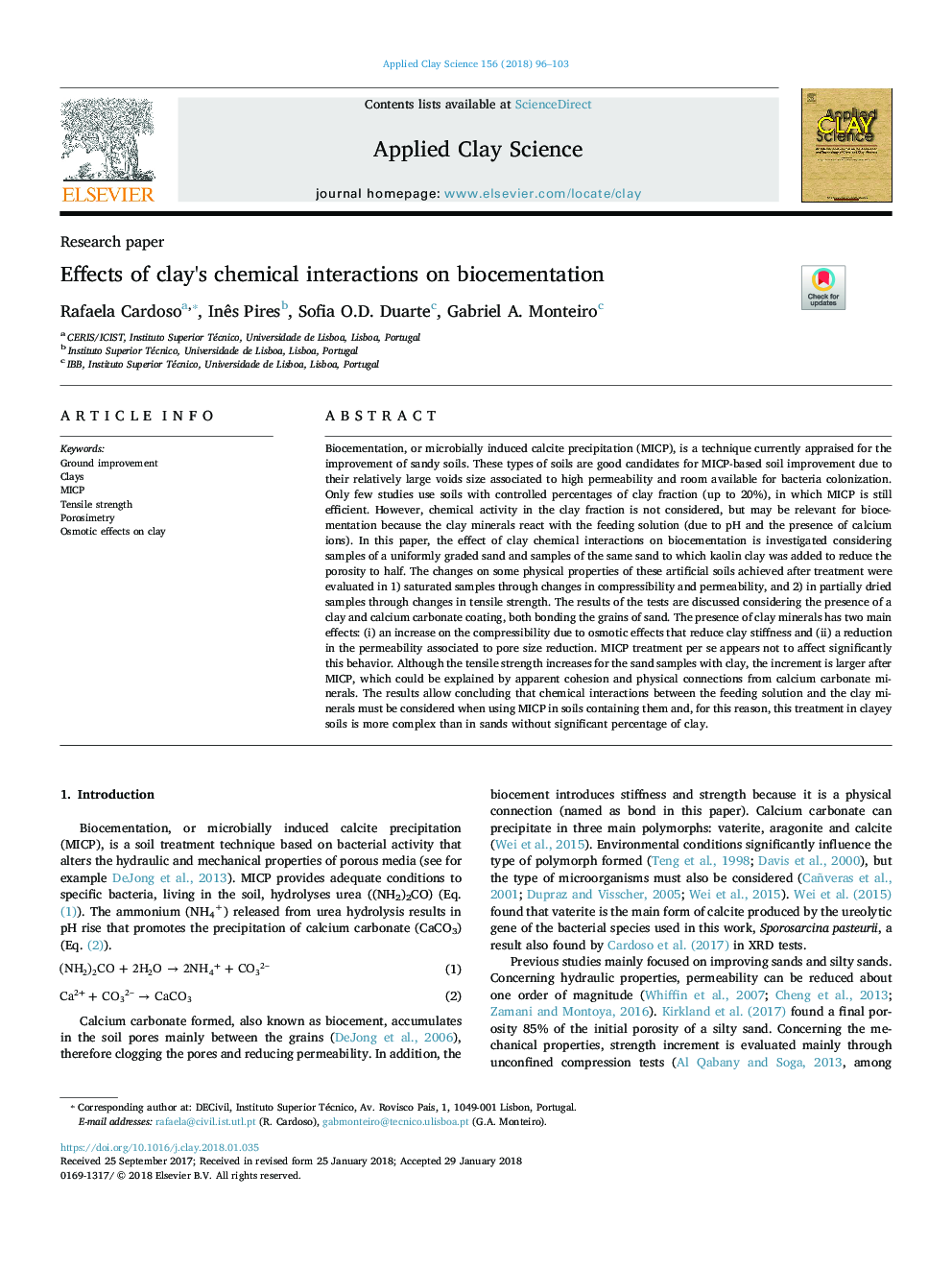| کد مقاله | کد نشریه | سال انتشار | مقاله انگلیسی | نسخه تمام متن |
|---|---|---|---|---|
| 8046087 | 1519032 | 2018 | 8 صفحه PDF | دانلود رایگان |
عنوان انگلیسی مقاله ISI
Effects of clay's chemical interactions on biocementation
ترجمه فارسی عنوان
اثرات متابولیسم شیمیایی رسوبی بر زیست زدایی
دانلود مقاله + سفارش ترجمه
دانلود مقاله ISI انگلیسی
رایگان برای ایرانیان
کلمات کلیدی
موضوعات مرتبط
مهندسی و علوم پایه
علوم زمین و سیارات
ژئوشیمی و پترولوژی
چکیده انگلیسی
Biocementation, or microbially induced calcite precipitation (MICP), is a technique currently appraised for the improvement of sandy soils. These types of soils are good candidates for MICP-based soil improvement due to their relatively large voids size associated to high permeability and room available for bacteria colonization. Only few studies use soils with controlled percentages of clay fraction (up to 20%), in which MICP is still efficient. However, chemical activity in the clay fraction is not considered, but may be relevant for biocementation because the clay minerals react with the feeding solution (due to pH and the presence of calcium ions). In this paper, the effect of clay chemical interactions on biocementation is investigated considering samples of a uniformly graded sand and samples of the same sand to which kaolin clay was added to reduce the porosity to half. The changes on some physical properties of these artificial soils achieved after treatment were evaluated in 1) saturated samples through changes in compressibility and permeability, and 2) in partially dried samples through changes in tensile strength. The results of the tests are discussed considering the presence of a clay and calcium carbonate coating, both bonding the grains of sand. The presence of clay minerals has two main effects: (i) an increase on the compressibility due to osmotic effects that reduce clay stiffness and (ii) a reduction in the permeability associated to pore size reduction. MICP treatment per se appears not to affect significantly this behavior. Although the tensile strength increases for the sand samples with clay, the increment is larger after MICP, which could be explained by apparent cohesion and physical connections from calcium carbonate minerals. The results allow concluding that chemical interactions between the feeding solution and the clay minerals must be considered when using MICP in soils containing them and, for this reason, this treatment in clayey soils is more complex than in sands without significant percentage of clay.
ناشر
Database: Elsevier - ScienceDirect (ساینس دایرکت)
Journal: Applied Clay Science - Volume 156, May 2018, Pages 96-103
Journal: Applied Clay Science - Volume 156, May 2018, Pages 96-103
نویسندگان
Rafaela Cardoso, Inês Pires, Sofia O.D. Duarte, Gabriel A. Monteiro,
